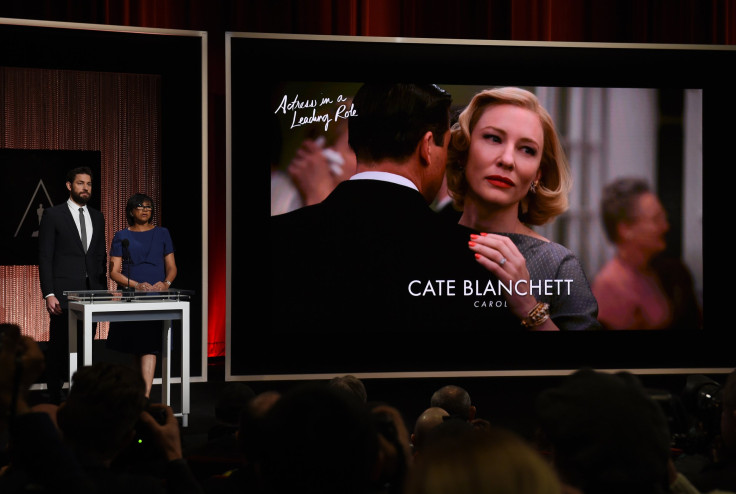Oscars 2016: The Oscars Are So White, But They're Also So Niche, And That's Not Going To Change

LOS ANGELES — Tens of millions tune in to the Academy Awards to see their favorite Hollywood megastars, but when it comes time to hand out hardware to the year’s best actors, the leading lights are often left in the dark.
While Oscar buzz can have a real impact on the box office, the acting and directing performances that tend to get the Academy’s attention — especially this year — aren’t necessarily the ones that stuck with the American public. Not because they weren’t good, but because they were in movies most people probably never heard of.
For example, this year’s nominees for actress in a leading role are Cate Blanchett in “Carol,” Brie Larson in “Room,” Jennifer Lawrence in “Joy,” Charlotte Rampling in “45 Years” and Saoirse Ronan in “Brooklyn.” All five of those movies combined brought in about $97 million at the box office in total, just edging “Tomorrowland” — last year’s No. 30 film.
The Academy, which just announced changes to its voting rules after two straight years in which all 20 acting nominees were white, is not in the business of conducting a popularity contest. And the performances the Academy singled out this year may not have cleaned up at the box office, but they are uniformly well-regarded by critics and certainly deserve recognition.
But if its difficulty recognizing performances from nonwhite actors means the institution is out of touch with American popular culture, the Academy’s preference in movies — which often ranges from niche to obscure — seems to underline that. And while the Academy’s new rules, which bump members from the voting rolls after 10 years of inactivity, may well end up with more popular films being nominated for awards, there’s no real incentive for the Academy to get away from honoring performances in the types of movies mostly film enthusiasts saw.
Rampling, who made waves last week after she told a French radio station saying that complaints about the Academy’s lack of diversity were “racist to white people," is a prime example. The movie she was nominated for, “45 Years” was last year’s No. 250 film, earning a grand total of $520,409 domestically. That’s about half of what “Star Wars: The Force Awakens” brought in on just its opening weekend... in Romania.
And out of eight Best Picture nominees, only “The Martian," which brought in the eighth-most amount of money of any 2015 release, and “Mad Max: Fury Road,” No. 20, were among the top 40 films in the box office.
However, the Academy’s apparent inability to be influenced by what’s popular doesn’t seem to have affected the mass appeal of the Oscars. Ratings dipped last year to 37 million viewers, but it remains one of the highest-rated non-football TV shows every year, and ABC has jacked up its ad rates as much as 10 percent. And like football, the Oscars can count on millions of people watching hours of pregame shows.
This year’s diversity controversy is likely to only help the ratings, as viewers are certainly anticipating how Chris Rock and his acid wit approaches his hosting duties, especially as fellow African Americans showbiz luminaries like Spike Lee, Jada Pinkett Smith and Will Smith plan to boycott the ceremony.
But despite the fact that they often go home empty-handed, Hollywood’s biggest names generally can’t resist the allure of walking the red carpet at the Oscars. And as long as that keeps America tuning in, the Academy can keep handing trophies to some of the least famous people in the room.
© Copyright IBTimes 2025. All rights reserved.





















